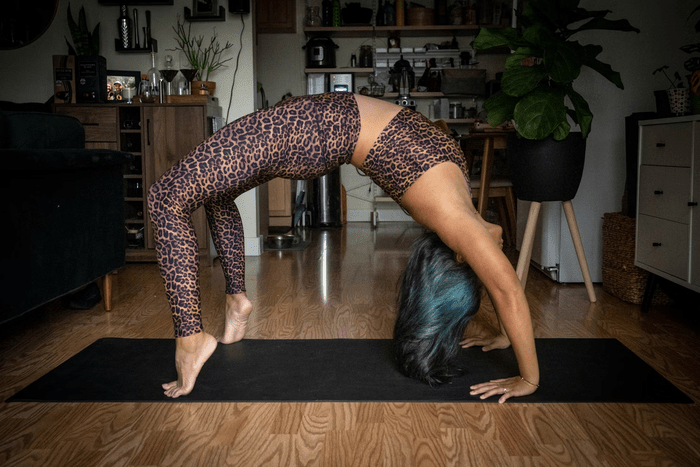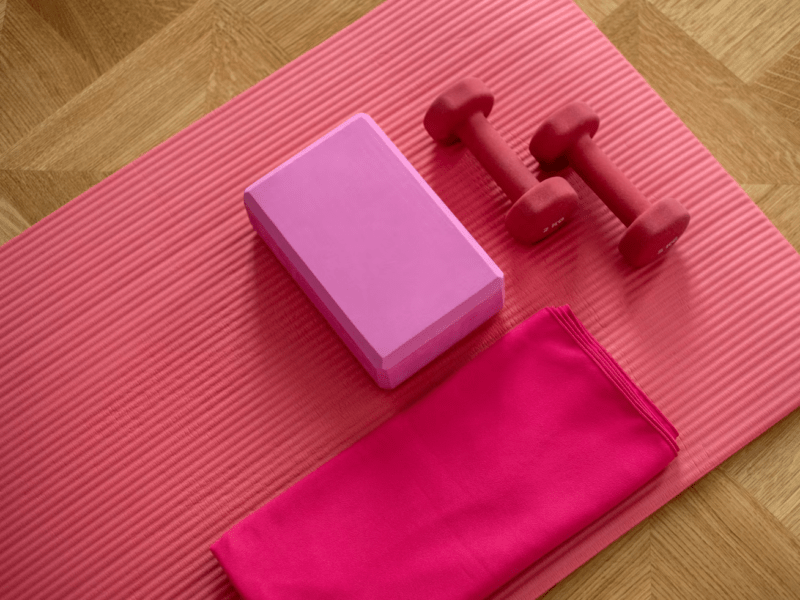Medically known as contusions, bruises occur when small blood vessels break under the skin, leading to discoloration and tenderness. Now, bruising can happen to anyone when you overwork your body in the gym, or even with low-intensity workouts when you’re posture isn’t right.
So, if you’re also stuck on the thought: “Can you get bruises from working out?” then you’ve landed at the right place. Here we will talk see how different types of workouts can lead to bruising and if it is dangerous for you.
Bruising After Lifting Weights
Can you get bruises from lifting weights? Well, YES. Weightlifting is a high-intensity exercise that can sometimes result in bruising. A study published by the National Center for Biotechnology Information (NCBI) found that approximately 19% of weightlifters experience bruising at some point during their training routines.
This is particularly common among beginners or those who lift heavy weights. When you lift weights you burn high calories and, your muscles undergo significant stress, which can cause tiny blood vessels to break, resulting in bruises. Bruising can be due to improper form, overexertion, or accidental impact with weights or equipment.
Weightlifting can lead to bruising if you have a condition that affects your blood’s ability to clot, such as thrombocytopenia or hemophilia as well. In such cases, even minor injuries can lead to significant bruising. Certain medications, such as blood thinners, can also increase the likelihood of bruising while lifting weights.
Bruising After Cardio Exercises
But less likely does not equate to no bruising. It can still occur, especially in high-impact activities. For instance, long-distance runners may experience bruising on their feet or legs due to repetitive impact and friction.
Research by the American Journal of Sports Medicine indicates that endurance athletes, including runners, can develop a condition known as exercise-induced purpura. This condition involves the appearance of small red or purple spots on the skin.
Apart from leg bruises, cardio exercises can also be a result of falls or collisions, common in sports like soccer or basketball. Protective gear and proper warm-ups can help mitigate these risks.
Bruising After Pilates

Pilates is a low-impact exercise that focuses on building muscle, core strength, flexibility, and overall body conditioning. Despite its gentle nature, Pilates can still lead to bruising, particularly for beginners or those performing exercises on hard surfaces without adequate padding.
According to a report from the International Journal of Sports Physical Therapy, Pilates practitioners can experience bruising from exercises that involve direct pressure on bony areas or from using equipment like the Pilates Reformer. For instance, exercises that require lying on the side or back can cause bruising on the hips or spine if not performed with proper cushioning.
To avoid bruising use proper equipment and ensure correct form to minimize the risk of bruising in Pilates.
Is Bruising Dangerous?
While occasional bruising from exercise is usually harmless, it can sometimes indicate more serious underlying issues. If you go through frequent or unexplained bruising you should not ignore it, as it might suggest a bleeding disorder or other medical conditions that affect blood clotting.
The Mayo Clinic advises that if bruising is accompanied by severe pain, swelling, or a lump over the bruise, medical attention should be sought immediately. Bruises that do not heal within a couple of weeks or those that appear without any clear cause also need professional care.
Besides this, certain medications and supplements can also affect bruising. For example, aspirin and other nonsteroidal anti-inflammatory drugs (NSAIDs) can increase bleeding risk, making bruises more likely.
Remedies To Get Rid Of Bruising
There are several effective remedies for reducing and treating bruises from workout routines, especially intense ones like 1-week routine to lose 15 pounds.
- Immediate application of ice to the bruised area can help reduce swelling and prevent further bleeding. The American Academy of Dermatology recommends icing the bruise for 15-20 minutes several times a day during the first 48 hours.
- Elevation of the bruised limb can also help minimize swelling by reducing blood flow to the area.
- Over-the-counter pain relievers like acetaminophen can be used to mitigate pain, but NSAIDs should be avoided as they can increase bleeding.
- Topical treatments, such as arnica gel or vitamin K cream, have been shown to reduce bruising.
- Maintaining a healthy diet rich in protein and vitamins C and K can also support skin and blood vessel health, potentially reducing the likelihood of bruising.
Parting Thought: Can Workouts Cause Bruising?
These bruises are usually harmless but should take a consultation with a healthcare provider to rule out underlying medical conditions. Understanding the causes of exercise-related bruising and taking appropriate preventive measures, such as using proper equipment, warming up correctly, and maintaining a healthy diet, can minimize the risk.
Doing so will allow you to enjoy the benefits of your fitness routine.





